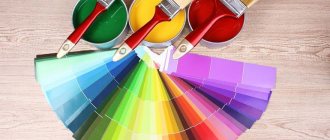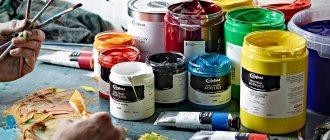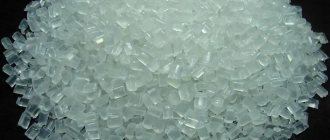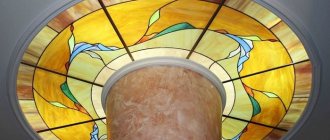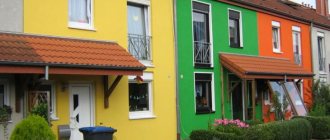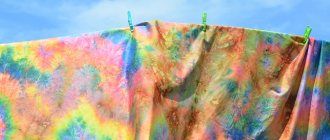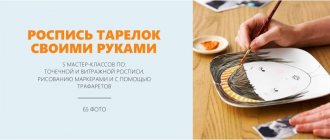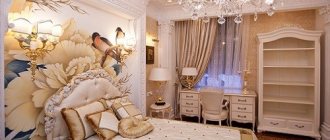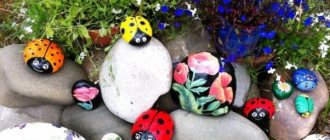Painted patterns are part of Slavic culture, and they are found everywhere - from dishes and household items, to building decor, and many other items. This art has been developing for thousands of years, while painting itself is practically a separate art form from pottery.
You have undoubtedly come across these beautiful products, which simply amaze with their brevity, and at the same time, the stunning depth of painting, as well as the semantic load. Yes, that’s right, each pattern has its own meaning, which the master puts into each specific product.
Painting ceramic items with acrylic paints may seem a little counterintuitive, because expensive ceramics are not very associated with cheap acrylic paints. But this is not entirely true, because thanks to certain techniques you can fix patterns while maintaining all the lightness and colorfulness of acrylic.
If you want to learn how to paint ceramics, as well as master the technique of painting with acrylic paints, our article will help you better understand all the features of this activity, as well as prepare for training. Of course, you can master any craft on your own, but how much time and effort will you spend on it? That is why it is worth learning about how best to engage in education and study of pottery, as well as purchase tools and materials for work.
Types of paint for glass and ceramic products
Coverage may vary. Some paints are applied to a “raw” unfired product and then subjected to heat treatment; this type includes cobalt paint. When applied to a product, it has a gray color, but after the oven it acquires the famous blue tints of Gzhel.
However, there are many more non-fired ceramic paints on the market. They are applied to the finished product and allowed to dry. This group includes acrylic paints for glass and ceramics. They have a rich palette, different packaging and it is very convenient to work with such a coating.
Craft stores offer a huge selection of both ceramic paints themselves and manufacturers. You can purchase ready-made sets of 6-10 bottles of different colors, or you can choose the colors you need yourself.
The purpose and type of the finished product is of great importance. A craftsman who makes items for sale will give preference to quality; parents who decide to work with their children are more likely to choose a ready-made inexpensive set for creativity. To create stained glass you will need special translucent water-based paints and a so-called outline. It is better to purchase the latter not a universal one, but a special one for working with glass and ceramics. Some paints cannot be applied to items used for serving food, others are completely unstable to water and detergents. You should carefully study the instructions before purchasing paint or consult with store salespeople.
Attention! Inexpensive acrylic paints without firing are washed off with water, but expensive ones can be easily scratched with a knife or fork. Therefore, for painting everyday dishes, it is better to use coatings that require heat treatment.
Foreign manufacturers of acrylic paints
Italian paints IDEA Vetro for stained glass painting are completely unstable to external influences and cannot be used for food purposes. They do not require firing and are made on an organic basis.
Professional paints from Kreul Hobby Line, made in Germany, are very durable and have a rich palette of colors. After painting, the product must be kept in an oven for 90 minutes at a temperature of 160 degrees.
Hobby deLUXE professional acrylic paints are an excellent choice for items for sale. Although the series is universal, the coating is perfect for working on ceramics and glass. The paints do not require heat treatment and are resistant to abrasion and water. However, they cannot be used for everyday dishes; the coated jars themselves are quite large and cost more than their analogues, and the palette consists only of delicate pastel colors.
What are ceramic paints?Before answering the question of what ceramic paints are, it should be noted that there is no established terminology in this area yet. Therefore, definitions will be formed as the words used are presented.
Ceramic paints are mineral paints, i.e. paints based on mineral dyes - coloring metal oxides. It is known that colored oxides/salts exist in nature, for example, iron oxide is red, cobalt oxide is blue, chromium oxide is green, etc. They or their mixtures are called pigments .
However, the use of pigments for decorating (drawing) ceramics is impossible due to the high melting point. Ceramics and glass are decorated at temperatures of 480 – 1450 0C. The melting points of pigments are generally above the specified upper limit. Therefore, the paint manufacturing process consists of the following steps:
- grinding of raw materials (refractory colored and low-melting colorless components);
- melting of raw materials;
- melt cooling;
- grinding the cooled melt.
Colorless fusible oxides (silicon, sodium, potassium, boron, etc.) are called fluxes. Mixing fluxes with pigments allows you to obtain colored melts when heated, almost analogues of colored glass
(transparent) or
smalt
(opaque).
Conventional ceramic paints are obtained by grinding in ball mills a specially cooled melt of mineral components - frit
. The grinding dispersion (the average size of a paint particle) is 4 – 8 microns, which allows the use of ceramic paints for all application methods used today.
The nature of paint application (overglaze, underglaze, interglaze, glass) depends on the pigment-flux ratio. In the high-temperature area of underglaze decoration, paints contain more pigment and less flux (approximate ratio is about 80% pigment and about 20% flux). For interglaze, overglaze and glass paints, this ratio changes consistently. Paints for thin-walled glass, on the other hand, contain approx. 80% flux and approx. 20% pigment. Accordingly, the more pigment and less flux, the higher the paint firing temperature and its hiding power.
In the production of paints for decorating various materials (porcelain, enamel, glass), fluxes of various compositions are used in order to match the coefficient of thermal expansion (CTE). In addition, an important factor is the paint’s resistance to external influences and aggressive environments. The higher the firing temperature, the higher the paint durability
. Obviously, underglaze paints have the highest durability, followed by interglaze, overglaze and glass paints.
For ease of decoration, the paints are combined into collections. Using collections of paints allows you to fire a multi-color product in one firing. To obtain intermediate shades, ceramic paints are miscible, but not universally. In terms of mixability, they are divided into two groups: cadmium (red, orange, warm yellow tones) and cadmium-free (all other colors). Within each group, paints are mixed universally, i.e. in any ratio. Mixing cadmium paints with cadmium-free paints is only possible to a limited extent and in each case requires a firing test. This is due to the fact that cadmium paints are less fire resistant. Mixing paints between groups further reduces the fire resistance of the mixture. Therefore, specific mixing ratios depend on the firing temperature. Mixing cadmium paints with cadmium-free paints in equal parts, as a rule, leads to the formation of a dirty gray tint or complete burnout of the mixture. The use of cadmium paints and/or their mixtures is possible only with dense application
.
Historically, it was believed that due to reduced fire resistance, the use of cadmium paints in high-temperature (over 950 0C) areas was impossible. However, with the advent of ca. 50 years ago the so-called “included” pigments solved this problem. “Included” refers to the color pigment enclosed in a transparent zirconium oxide shell.
This allows the use of cadmium dyes at temperatures up to 1350 0C in the interglaze and underglaze areas of decoration, as well as when coloring masses (Notes on miscibility and compatibility with glazes can be found in the descriptions of the relevant collections). The production technology of the included pigments is quite complex, which determines their relatively higher price.
In the group of cadmium-free paints, purple paints can be distinguished. These colors range primarily from pink to dark crimson, although deep blues and browns are possible. A characteristic feature is the use of gold compounds in their production, which determines their high price. They are characterized by high intensity and coverage, so they are applied in thin layers. Mixing purple paints is most often done with blue tones to create violet and lilac shades. It should be noted that pink tones cannot be obtained by mixing red and white because these colors belong to different groups of paints. To obtain pink tones, only purple dyes are used. The use of purple paints is only possible for glass, overglaze and interglaze decoration at temperatures not exceeding 1220 0C. No purple paints are used in the underglaze area. To achieve similar effects in underglaze decoration, either gold salts or pigments without precious metals are used. When decorating enamel, it is recommended to use purple paints that do not contain silver, because Due to the high reactivity of the enamel, the color may fade to brown. Therefore, the choice of purple enamel paints is limited.
Interference paints and paints with a metallic effect can be considered a separate type of paint. These paints are used for decorating glass and overglaze painting and do not contain precious metals. Interference paints create the effect of mother-of-pearl in various shades, metallic paints imitate a metallic sheen with gold, silver, bronze and copper shades. A characteristic feature of these paints is the particle shape. Unlike conventional paints, it does not look like a ball, but like flakes, which ensures the appearance of a metallic sheen. In order not to destroy this particle shape, these paints are not ground when applied with a brush and are pressed only through coarse meshes in the silk-screen version. Such paints give the best decorative effect on dark, opaque substrates when applied tightly. Therefore, when decorating glass, it is recommended to use white or dark underlayers, and when decorating porcelain and ceramics, dark glazes are recommended. It must be borne in mind that paints with a “metallic” effect imitate noble metals only approximately and, as a rule, do not replace them. However, the simultaneous use of such paints and precious metal preparations can produce very interesting decorative effects.
Precious metal preparations can be combined into a separate group of ceramic paints. Unlike ordinary paints, which are powders, precious metal preparations are in the form of liquids or pastes, with the exception of powder preparations. Noble metal preparations are organometallic compounds in which a metal atom and/or oxide/salt molecule is embedded in a polymer structure. After firing, precious metal preparations form a metal/metal oxide film on the surface of the product, the thickness of which depends on the percentage of the inorganic component. Depending on the metal content, precious metal preparations can be divided into:
- chandeliers (chandeliers are masculine) – up to 6%
- glosses – from 7 to 15%
- polishers – from 16 to 40%
- powder – from 40 to 100%.
Accordingly, the higher the percentage, the closer the decoration effect is to the appearance of solid metal and, naturally, the higher the specific cost of the drug. More detailed information about preparations of noble metals can be obtained in the article “Creation and use of preparations of noble metals”.
For a more complete understanding of the basics of decorating ceramics, it is also necessary to highlight issues of application methods, the use of auxiliary materials (media), firing modes, durability and environmental friendliness. Look for these and other questions as they appear on the pages of our website.
Fluxes are a mixture of colorless mineral oxides and/or salts.
Glass is a cooled transparent melt of fusible oxides. Decoration temperature range: from 480 0C (crystal) to 700 0C (building and auto glass). CTE = 80-100. 10-7 1/K.
Smalt is a cooled opaque melt of fusible oxides and/or salts. The temperature range of decoration depends on the composition and, as a rule, does not exceed 800 0C. The CTE value is close to glass.
Frit is a melt of mineral components cooled by drop casting. It looks like glassy balls of irregular shape.
Covering power – degree of opacity.
CTE is a quantity that characterizes the change in body size with temperature changes.
A collection is a set of paints with the same firing temperature.
Domestic producers of acrylic paints
Among Russian manufacturers, paints for ceramics and glass can be noted: Olki, Gamma and Decola. All of them do not require firing and are not very resistant to abrasion. Products from the Olki series can rarely be found on sale; the paints themselves are practically no different from universal acrylic ones. Gamma coatings have a too liquid consistency and are inconvenient to work with, and the color palette is meager, dull and inexpressive.
Perhaps, among domestic products, the choice of Decola paint for glass and ceramics will be optimal in terms of price and quality ratio. The Neva palette creates coatings of bright and rich colors. Paints for ceramics are waterproof and are subject only to external mechanical influences, which means they are suitable for decorative purposes. The line includes ready-made sets and stained glass coverings. Decola paints for ceramics and glass are presented in two versions: matte and metallic, the same applies to the manufacturer’s contours.
How different colors are obtained
Most pigments are found in the form of highly dispersed powders with various color shades. They are quite resistant to external factors and do not dissolve in water. There are natural (natural) dyes and synthetic (artificial) dyes.
- Natural dyes are formed by grinding colored ores and clays.
- Synthetic ones are obtained by calcination and fusion of oxides, hydroxides or salts.
The composition of the pigment determines its color. Popular dyes, in demand by many artists today, are used to color blue, purple, green or brown. The master achieves different intensity and saturation not only by the quantitative content of the pigment, but also by the calcination temperature.
The firing temperature and the calcination temperature of the pigment are the two most important parameters when creating the color design of ceramics. You can slightly change this or that shade by increasing or decreasing the calcination time. During firing, a reducing chemical reaction occurs. The reducing agent is the gas environment of the furnace. As a result of this reaction, the substance becomes green.
Yellow pigments are obtained by adding boron-containing elements. Also, shades of yellow form oxides of zinc, lead and uranium. In the oxidation reaction during firing, the same elements can give different colors. Tones range from green to orange.
Red, pink and purple colors are created when gold is added. The shades of these colors are produced by lead oxide, iron oxide, as well as compounds containing cadmium and selenium. The listed chemical elements are called purple, since they are “responsible” for the red color of the pigment. Brown pigments may contain nickel, chromium, manganese and iron. The black color comes from lead flux, and the gray color comes from tin or zirconium.
It makes no sense to increase the proportion of pigment in the manufacture of paints or engobes, since no visible difference is observed, and the material becomes drier. Only oxides can be added in unlimited quantities, since they do not affect the moisture content of the base material, and their saturation can give interesting shades. Experienced craftsmen know which pigments form which shades when mixed with base glazes. This must be taken into account, since not all components are compatible with each other. If it is necessary to obtain pastel shades, then use white glazes. To obtain bright colors - transparent.
When coloring clay masses, it is necessary to know the maximum permissible pigment content. Excessive amounts of powder will weaken the clay.
For example, for porcelain the maximum proportion of dye should not exceed 20%, but for light tinting, 5-8% is enough.
Dry and low-fat clays become difficult to work with. There are masses with a high content of fatty clay. They can add up to 40% pigment. However, this is advisable when obtaining a golden color for inlays and other exclusive items.
Paints for ceramics and glass
Special coatings are required for working with porcelain and earthenware, ceramics and glass. Universal paints cannot always adhere to the smooth and even surface of materials.
You can purchase a ready-made set with basic colors and mix them on a palette to achieve the desired shade. But if the master’s skills and experience in mixing paints are limited, you should purchase colors separately. The Decola palette is very diverse, it contains delicate pastel colors, ordinary matte colors, metallic gloss coatings and bright rich colors.
Contours for glass and ceramics
This type of material can be used independently and in combination with other paints.
The contour is indispensable for working on glass and creating stained glass windows. They can also be purchased as part of a set or individually. The substances contained in the contours adhere the pigment well to the smooth surface. The stroke outlines the boundaries of the drawing and does not allow the paint to spread over the surface. The most beautiful and unusual works are obtained by combining colors and contours in creativity.
The coating is very easy to use. First you need to come up with a design and select a suitable item. Then take a tube of contour and carefully transfer the drawing, trying not to touch the lines with your hand or fingers. It only takes a little practice in pressing force to obtain the line of the desired thickness.
Stained glass paints
Glass painting has its own nuances. As a rule, it is required to maintain the transparency of the material even after applying paints. The light passing through the stained glass windows is colored and, falling on objects, creates fabulous patterns around.
Stained glass paints are made translucent, as they must transmit light. To apply them, the glass surface must be degreased; this condition also applies to other materials. You can purchase a solvent for the coating kit; it will be needed when making changes to an already applied pattern or correcting errors. The finished work can be dried for 3 hours or fired at a temperature of 100 degrees, but not more than 30 minutes.
Stained glass paints and contour are simply made for each other and always go together. By combining both coatings, you can easily and simply create unique things. You need to draw the design of the picture and place it behind the glass, and simply transfer it to the surface with an outline. Stained glass paints are quite fluid and will easily fill the voids between boundary lines.
The modern market for creative goods is ready to offer not only paints, but also a whole sea of related materials. For example, removable metal tips for outlines, stencils for stained glass, markers for ceramics and gel pencils that imitate glass after drying.
Decorative effects
When applying a varnish composition to designs created by sandblasting, an unusual, very attractive frosty effect is created. After the varnish mixture dries, the surface acquires light-scattering properties and becomes glossy and shiny. Decorative additives can be added to acrylic water-soluble compositions to create a hologram, metallic or mother-of-pearl effect. Pigment components must be added to the solution immediately before application, strictly according to the instructions indicated on the packaging.
Paints and varnishes with a frosty effect for application to glass surfaces are sold. After treating products with these solutions, a very durable and hard matte or frosty effect is obtained. This effect can be created either in white or any other shade, thanks to the addition of special pigments. To consolidate the frosty effect, special drying-firing is required. According to the technology, the varnished layer must be heated to a temperature of approximately 180 degrees. At home, this temperature can be achieved in a conventional oven, where the product should be heated for about 30 minutes.
Dot painting of ceramics
There are many techniques for painting ceramics and glass. Masters find themselves in 2-3 types of work, study all the intricacies of materials and coatings and successfully work with them, combining and combining the experience gained.
Dot painting is very popular in painting dishes and plates. A pattern - dots using colored outlines - is applied to already processed and painted ceramics. The finished products attract the eye, it is impossible to pass by them and remain indifferent.
Although the writing style is reminiscent of Arabic culture, it is impossible to say where the technique was invented. Similar paintings are found both in Africa and India. The items will be reminiscent of the culture of the country whose characteristic elements are chosen for the pattern design.
Animalistic painting
The subjects of paintings for ceramics and glass are often the flora and fauna.
Undoubtedly, such wonderful plates will delight both children and adults. Children can work with paints and try to paint a mug or dish themselves. The child will be proud and happy to eat breakfast from homemade dishes.
It is much easier to work with special felt-tip pens and gel pencils than with paints. If the drawing is erased, it can be easily updated or corrected. And although many people think that a felt-tip pen is too simple and boring, with imagination you can create beautiful things with limited means.
Features of paints
Water-based paints for glass and ceramics are used to decorate dishes, as well as many other products of any shape. Ceramic products painted with these materials can be washed in water after firing, preserving the image.
Ceramic paints are made by mixing colorless glazes, clays and fluxes with pigments of natural or artificial origin.
Based on the method of application, coatings are divided into underglaze and overglaze. In the first case, the composition is applied before firing, so it appears under the glaze, and in the second - on products that have already been fired. In order for the paint to adhere to the ceramic surface, binders such as glycerin, sugar and other components are added to the material. Salts of various metals are used as elements for painting ceramic surfaces.
Paints for glass and ceramics consist of flux, which is silicate glass that melts easily, mixed with metal oxides. Most often, masters of artistic painting, after firing, paint the product with oil compositions, gouache, tempera, and watercolor, after which they coat the product with varnish.
Paints for ceramics and porcelain must be of high quality and safe for the user. This is especially true for materials applied to the surface of dishes with your own hands. It is advisable to select brushes for them that are of excellent quality and quite expensive. For relief painting you need to use a special clay paste. The simplest and most affordable way of painting is using aerosols.
The preparation of glass and plastic for painting is the same. First, the surface is degreased using a simple detergent, alcohol or white spirit. Next, primer is applied. Decoupage can be done using a napkin.
It is recommended to apply a finishing varnish to the painted surface, preferably in three layers. Sometimes you have to apply more layers of varnish.
Types of varnishes
To spot varnish, for example, tiles or ceramics, it is better to use a topcoat fixative varnish. This solution is resistant to adverse effects; it will not be damaged even if the ceramic products are washed in the dishwasher.
For industrial processing, aggressive compounds are used, for example, those based on epoxy resins. This varnish layer is highly resistant to chemicals and abrasions. When painting glass containers, such as perfume bottles, as well as for processing glass-ceramic surfaces, special stained glass varnishes are used. The word “stained glass” indicates that the varnish mixture can be applied to any type of glass-ceramic surface.
If it is necessary to create a protective layer for objects that are in conditions of constant high humidity, or under regular influence of solvents, it is recommended to use a special stained glass varnish solution. It is characterized by increased mechanical stability and resistance to chemicals.
Subtleties of application
Colorants for painting glass and ceramics are divided into paints, outlines, markers and melting granules. In addition, paints for glass and ceramics are divided into two types depending on the purpose of painting.
Paintwork materials can be applied without firing or with firing. The beauty of the painting depends on which of these methods is used.
Professional artists use complex dyes when painting ceramics, which may belong to glaze or enamel. Painting of ceramic dishes such as teapots, cups, plates can be done both in production and at home. Kits for painting dishes on their own are sold with a ready-made object, which even children can draw on.
Organic screen printing inks
Organic screen printing inks, meanwhile, are widely applicable in many applications. There are various chemical bonding methods. The most interesting methods for fixing paint may seem most interesting to the user. Heat cure mixtures typically cure at temperatures between 120°C and 180°C, which is a huge improvement over the 600°C of ceramic paints. Mechanical and chemical resistance is acceptable in most cases, but the heat and light resistance of ceramic paints is higher than that of organic mixtures.
One of the newest developments is radiation bonding. Fixing can be carried out instantly, so that the layer that has just been printed can be applied to the next one without delay. After each printing stage, it is necessary to use special equipment for fixing. Modern radiation bonding methods have a high level of adhesion even on difficult substrates such as container glass (Fig. 5). Light resistance when cured by radiation is not sufficient for permanent outdoor use.
Rice. 5: Radiation-cured screen printing (Marabu GmbH & Co KG) on a disposable glass bottle.
To give color to organic paints, organic pigments are used, which eliminates the need for heavy toxic metals, and the color range is richer than that of ceramic paints. The use of effective pigments is also possible. Organic binder and organic pigments are generally prone to degradation when exposed to intense light. This is one reason why organic mixtures are not intended for long-term outdoor use. Another reason is that glass used in architecture, and especially in the automotive industry, must be tempered and curved - processes that are best done after printing. Only ceramic paint can survive the temperature at which the bending process occurs.
Main types of paints
To paint on a glass surface or ceramics, use the following paint materials:
- Enamel. After application it forms a glossy surface. This durable paint does not contain lead and is therefore suitable for use on utensils used in the kitchen.
- Water based paint. It allows you to easily adjust the transparency. After application, the products are baked in an oven with a gradual increase in temperature and dried in the fresh air.
- Professional paint-glaze. It hardens at high temperatures, after which the product acquires a glossy surface.
- Regular glass paint. Can be used for painting both ceramics and porcelain.
- Vitrail Colors glass paints. Many professionals use them.
If you paint finished dishes without a design on it, the cost will be more profitable than purchasing it with a ready-made design. Therefore, it is better to draw on glass and ceramic products yourself. Acrylic painting works great on ceramic surfaces.
The contour for glass and ceramic products is a tube of acrylic paint and a sharp tip. Acrylic relief compositions - contour are used to apply the outline of a picture, strokes and inscriptions.
Advantages
The main advantage of acrylic paints over oil paints is that after drying they do not become brittle and brittle. After the painting has dried, you can roll it up into a regular roll for convenience, without fear of the paint cracking or falling off. Also, it should be noted that due to its structure, the paints are easily mixed and are not taken in layers.
For a more liquid consistency, paints are diluted with plain water. If you need a dense, opaque layer, it should not be dissolved. The more water you use for dilution, the more transparent the color will be.
Which is better: heated floors or radiators?
Warm floorBatteries
After the work is completed, it is necessary to remove any remaining paint from the palette and brushes. If you work with oil, you need to buy various solvents for cleaning. In the case of acrylic, it is enough to wash the tools in regular running water.
When dry, the paint becomes completely waterproof, which is another argument for using acrylic. Working outdoors or on city streets, artists are faced with the problem of sudden rain. For people working outdoors, it would be preferable to buy acrylic paints than any other.
Artists who prefer to paint with oil know that one of its features is uneven drying. Each color has its own drying speed. What is the difference between acrylic paints for ceramics? In this regard, acrylic paints are also one step ahead, because the painting dries evenly, regardless of color. Also, fast drying allows the artist to apply a second coat on top of the first without damaging it.
People who use glaze or dry brush when working will appreciate the quick drying.
Also, it should be noted the durability of acrylic paints, which do not change shades over time and adhere tightly to any coating. Flaws
The fact that acrylic paints dry quickly is of course good, but this is also their disadvantage. Acrylic paints are not suitable for those people who are used to painting slowly. In cases where you need to correct a brushstroke, or change something in the picture, you will not be able to do this, because... The smear will stick firmly after just 10-15 minutes.
If you want to continue working another day, or even after a few hours, the brush must be left in water, because if it sticks together, it will become unsuitable for further use. When painting, the palette must be constantly sprayed with water, otherwise the paint on it will harden. But, if you are an artist who needs to quickly apply layer after layer, then buying acrylic paints will be optimal.
What you need for glass painting
Painting on glass looks just great. Using stained glass techniques and a relief contour that forms a barrier that does not allow the composition to spread, it is possible to create real works of art, reflecting all the beauty of stained glass.
For this painting you will need:
- Contour for glass and ceramics from the unfired series.
- Sketch of the work in the form of a pencil sketch.
It is necessary to obtain the shade of paint of the desired tone. Traditionally, stained glass varnish paints are used for painting. However, all compositions are divided into the following types:
Such paints apply to any surface. If it is not possible to fire the product after applying paintwork, it is coated with varnish. Special effects varnish is also on sale. It is also used to coat glass surfaces.
Tips for choosing paints for porcelain
Coloring materials for earthenware and porcelain products that have a smooth and slippery surface must not only be selected correctly, but also applied correctly. When we paint on ceramic products, we use various application techniques using available materials. Firing porcelain tableware is a complex technological process that requires high temperatures.
To apply a complex design to a product, several stages of painting will be required. In addition, finished porcelain products must be waterproof so that the design on them is not washed off either by water or detergents. Glaze painting allows you to make earthenware closer in color to porcelain, after which it becomes much brighter.
A wide range of paints and varnishes for ceramics are presented in the catalog of the online store of goods for artistic creativity. As a rule, such coloring materials for glass and ceramics are immediately ready for use. The designs applied with these compounds are preserved for a long time.
Using paints, you can apply a design to any glass and ceramic objects, giving them special beauty and sophistication. It is easy to create wonderful decorations from colorless objects using paints and a brush.
DIY ceramic tile coating
The tool is being prepared:
- fine-grained sandpaper;
- primer, epoxy is recommended;
- brush, the smaller the design elements, the smaller the tool;
- roller;
- container for paint;
- textile;
- solvent;
- construction tape;
- surface degreasing composition;
- dye;
- varnish material.
Work begins with surface preparation.
- The room is cleared of furniture, appliances, and small interior items. Anything that cannot be taken out is covered with a film to prevent accidental drops of paint.
- Dirt and grease are washed off the tiles using detergents (abrasive powder, acid).
- The surface is rinsed with clean water and wiped with a cloth. It should be completely dry.
- Acetone or gasoline is useful for repeated degreasing.
- The tiles are processed with sandpaper. Roughness on the surface can be created with sand or a metal sponge. This increases the tenacity of the CM with the tiles.
- Remove dust with a dry cloth.
- Using a brush, the tiles are coated with a primer so that there are no smudges. The seams between the tiles are carefully checked.
- Putty is applied along the seam lines.
- The baseboards are covered with construction tape to protect them from accidental paint.
Tip: When stripping, pay special attention to the seams. This is a place where dirt accumulates. If it remains at least partially, then there is a possibility of fungus appearing along the seams after they are painted.
The second stage of working with tiles is the direct application of the dye. The tile is updated in three ways:
- Complete surface coverage and complete shade change.
- Color restoration. Updating the layer involves leaving the background color the same, but more saturated.
- The surface is covered with drawings and patterns. The previous layer or the freshly dried one is decorated.
You need to work in special clothing, rubber gloves, glasses to protect your eyes, and cover your head.
The procedure for coating tiles with paint is divided into steps:
- The composition is stirred in the container until homogeneous.
- For comfort in work, the CM is poured into a special tray. It will be convenient to dip the roller and brush. The central part of the surface is painted with a roller, corners and places with a complex configuration are painted with a brush. The smooth slab is covered with a decorating layer 3-5 times. Their number depends on the topography of the tile surface.
- The CM begins to be applied from the corner of the room opposite the front door.
- Each subsequent layer covers the dried previous one. The type of dye, temperature and humidity in the room dictate the drying speed of the coating. The average is 6-12 hours.
On average, floor tiles are ready for use after 72 hours. After the same period of time, no traces will remain on the updated walls.
